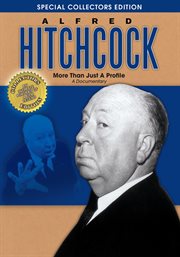Review by New York Times Review
YOU have to be a little crazy to read as much into "Psycho" as David Thomson does in "The Moment of 'Psycho': How Alfred Hitchcock Taught America to Love Murder." Not that crazy people can't be charming and erudite, just as Anthony Perkins's Norman Bates is in that movie. But read this book in long stretches - sit, as it were, with Thomson in a room and listen to him expound - and you may start having that "I gotta get out of here" feeling. Thomson, a noted film critic and the author of "A Biographical Dictionary of Film," isn't really crazy, of course, just knowledgeable. His vast storehouse is on full display here, in honor of the 50th anniversary of the release of "Psycho." (It opened in June 1960.) He skillfully locates the movie in Hitchcock's oeuvre, linking its theme of the dangers of loneliness to "Rear Window" and "The Birds" and its voyeurism to "Strangers on a Train" and others. And, in a chapter called "Other Bodies in the Swamp," he traces the influence of "Psycho" on more recent movies. "Psycho," for instance, included a toilet-flushing scene that had censors all worked up; in 1974, Francis Ford Coppola's film "The Conversation" had a malfunctioning toilet. "The overflowing toilet is a clear reference to 'Psycho,'" Thomson writes, "as well as an admission that the censors have all gone home." More important, there was the violence of the notorious murder-in-the-shower scene, which he sees as paving the way not just for gory films like "Bonnie and Clyde" (1967) but also for the far less grim James Bond movies. How so? "Hitchcock," he writes, "was a point of reference in the discovery of a tone that would let the authence laugh at things that were once beyond laughter because of cruelty or sexual exploitation." Before getting down to the business of the book's subtitle, though, Thomson indulges in an almost frame-by-frame analysis of "Psycho," paying particular attention to the first half, up to the point when Marion Crane (Janet Leigh) takes her fatal shower. Sets and facial expressions are painstakingly described; interior monologues are presumed; viewer reaction is postulated; tangents that take us to other movies ("The Maltese Falcon," "To Catch a Thief") are followed. It's interesting stuff for anyone who has watched "Psycho" 50 times (or has watched it just before reading this book), but who except an unbalanced film student has these days, when the movie registers as a nugget of silliness wrapped in retro cool? Sure, Thomson is merely doing what serious film critics do: dissecting movies the way a coroner probes a corpse, piling far more import onto them than their creators ever intended. And in the best parts of the microanalysis stretch of the book, he is deliciously eloquent, as when he at last comes to the end of Marion's journey: "She takes off her robe. She steps into the shower. This is the moment." But the exercise feels a little like a last gasp. The year of "Psycho" roughly coincided with an expansion in the production of culture of all kinds - movies, television shows, rock albums and so on - a proliferation that has increased exponentially lately. Sheer quantity has made it almost impossible for a single creation to effect a sea change. And the films that have become cultural phenomena since "Psycho" - "Jaws," say, or "Star Wars" - don't exactly lend themselves to highbrow criticism. Maybe alongside all the groundbreaking that Thomson attributes to "Psycho" there is room for a companion theory about the film: that it was the last movie about which a book like "The Moment of 'Psycho' " could be written. Neil Genzlinger is a staff editor at The Times.
Copyright (c) The New York Times Company [January 17, 2010]
Review by Booklist Review
In this compact book extended essay, really the arguably most provocative and acerbic of major film critics (see the plethoric Have You Seen . . . ?, 2008) concentrates on a single work, Alfred Hitchcock's influential Psycho. The 1960 film was groundbreaking not just for bringing sex and violence to the fore and eschewing the expected happy ending but also for its efficient, low-budget production. It was shot in just three months in the expedient fashion of Hitchcock's television series. After an introductory passage on the film's genesis, Thomson offers a close reading distinguished by insight and illumination, particularly about the problematic second half. He concludes with an analysis of Psycho's impact, including an annotated list of films it influenced, especially in its treatment of sex and violence, from James Bond flicks to David Lynch's and Quentin Tarantino's bloodbaths. Thomson doesn't blame Hitchcock for touching off the subsequent wave of emotionally detached movies predicated on gory special effects but says Psycho opened the door to ignoring consequences if the end product is thrilling enough. --Flagg, Gordon Copyright 2009 Booklist
From Booklist, Copyright (c) American Library Association. Used with permission.

